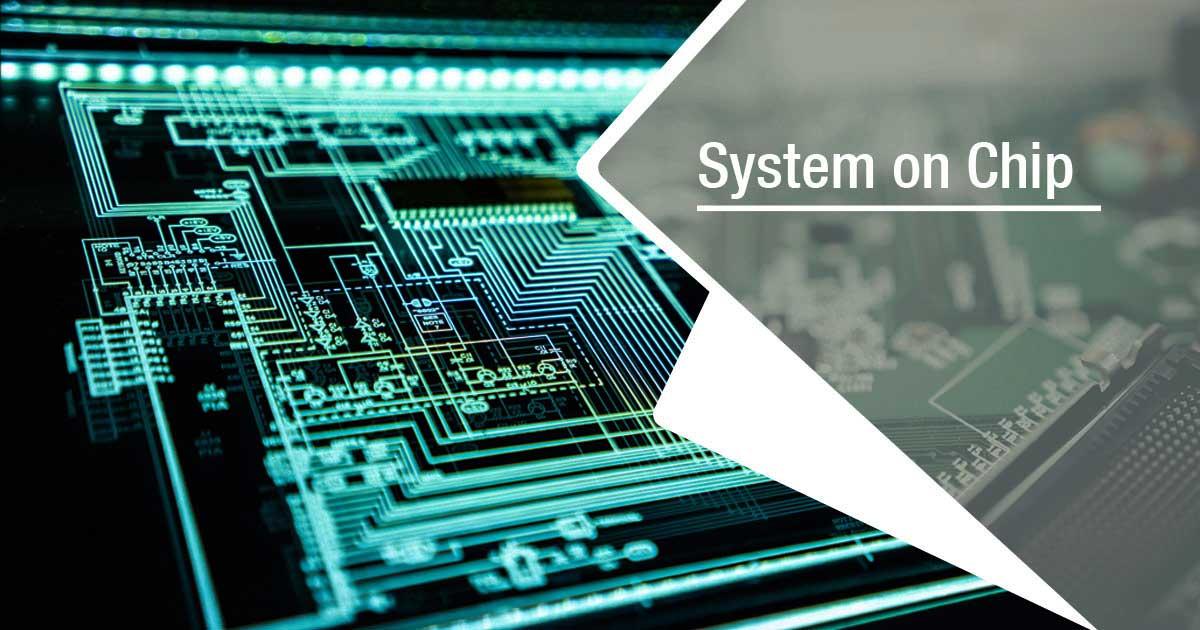System on a Chip: The Future of Electronics Design

The concept of integrating multiple components of a computer or any other electronic systems into a single circuit has existed for many decades. However, modern technological advancements have enabled engineers to design complete computer systems on a tiny silicon chip known as System on a Chip or SoC. SoCs are revolutionizing how electronic devices are designed and manufactured. Read on to learn more about the fascinating technology of SoCs and their impact.
What is an SoC?
A System on a Chip (SoC) refers to integrating all the components of a computer or other electronic system into a single integrated circuit (IC) or chip. These components may include a microprocessor, memory blocks, interfaces, and various digital, analog, mixed-signal circuits. The key advantages of SoCs are lower power consumption, reduced cost, improved performance, and smaller form factor. Instead of several discrete chips on a printed circuit board that must communicate via bus interfaces, all system components are integrated onto one extremely small silicon die or chip.
Major Components Integrated into an SoC
Typical components that are commonly integrated into modern SoCs include a central processing unit (CPU), graphics processing unit (GPU), memory blocks such as random access memory (RAM) and read-only memory (ROM), various interfaces such as USB, Ethernet, HDMI, etc. along with supporting logic and analog circuits. More advanced SoCs also integrate radios for cellular connectivity, image signal processors (ISPs), audio encoders/decoders, and other specialized multimedia accelerators. This level of heterogeneous integration enables the development of powerful yet highly portable smart devices.
Evolution of SoC Technology
Some of the early SoCs from the 1990s integrated only simple processors and a few peripherals. However, thanks to continuous advancements in silicon process technologies and transistor densities as per Moore's law, the complexity and capabilities of SoCs have increased exponentially over the decades. Modern SoCs integrate billions of transistors on areas smaller than a fingernail. Examples of complex SoC designs include the Apple A-series chips used across iPhones and iPads, Snapdragon chips from Qualcomm used in Android phones and the Huawei Kirin chips.
Applications of SoCs
The wide-ranging applications of SoCs span diverse markets from smartphones, tablets and wearables to smart home devices, networking equipment, industrial automation, automotive, aerospace, medical instruments and more. Some key application areas have been discussed below:
Smartphones and Mobile Devices
The mobile devices revolution was kickstarted by SoCs as they enabled the integration of powerful yet highly portable smartphones. Advanced mobile SoCs now pack the computing power of desktop PCs from a decade ago. Flagship Android and iOS devices are powered by the latest Arm-based SoCs from Apple, Qualcomm, Samsung and Huawei.
Automotive Electronic Control Units
Modern vehicles today contain dozens of electronic control units (ECUs) to govern systems like engine control, anti-lock braking, infotainment and more. SoCs allow automakers to pack more functionality in fewer chips, reducing complexity and costs.
Networking Equipment
Routers, switches, wireless access points, firewalls extensively utilize high-performance network SoCs from leaders like Broadcom, Intel and Marvell to handle bandwidth-intensive data routing and processing tasks.
Embedded Systems
SoCs are an ideal solution System on a Chip (SoC) for miniaturizing industrial embedded devices and internet-of-things (IoT) nodes where low power usage and small form factor are critical. Medical devices, aerospace systems, smart home appliances extensively utilize SoCs.
Impact of SoC Technology
The wide-scale adoption of SoCs has had a transformational impact on industries:
Lowered Electronic Product Costs
Integrating multiple components into a single SoC dramatically reduces costs by eliminating assembly and interface component costs while improving functionality. This has enabled once cost-prohibitive devices to become mainstream products.
Increased Portability and Miniaturization
SoCs have spearheaded the ongoing miniaturization of electronic devices by integrating whole systems into tiny packages, allowing portable form factors unimaginable earlier. This has grown new device categories like wearables, smart home appliances.
Accelerated Technology Innovation Cycles
The exponential growth in SoC capabilities as per Moore's Law has complemented and accelerated innovation cycles across industries that utilize electronics for varied functions. Automation, connected infrastructure are examples of fields augmented by SoCs.
Emerging SoC Design Trends
Going forward, some emerging trends in SoC design include 3D chip stacking that integrates memory dies atop processor logic to ameliorate bandwidth and performance issues. Heterogeneous multi-core designs that combine general purpose and specialized cores for different workloads are also gaining prominence. Advances in specialized accelerators for machine learning and 5G networking are other areas to watch. As semiconductor progress continues unabated, SoCs will empower increasingly innovative smart electronic devices in the future.
For more insights, read-https://www.insightprobing.com/system-on-a-chip-trends-size-and-share-analysis/
- Art
- Causes
- Crafts
- Dance
- Drinks
- Film
- Fitness
- Food
- Games
- Gardening
- Health
- Home
- Literature
- Music
- Networking
- Other
- Party
- Religion
- Shopping
- Sports
- Theater
- Wellness
- IT, Cloud, Software and Technology


